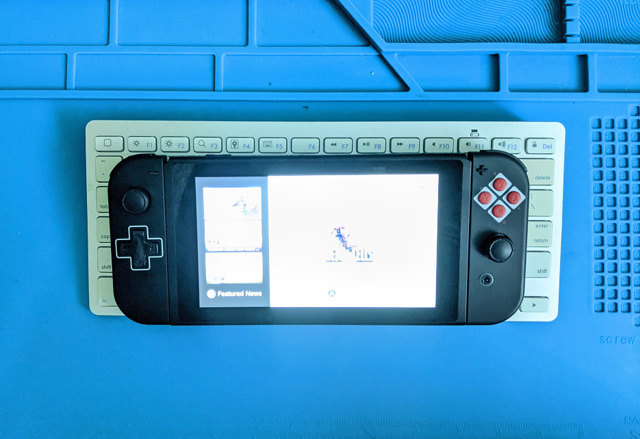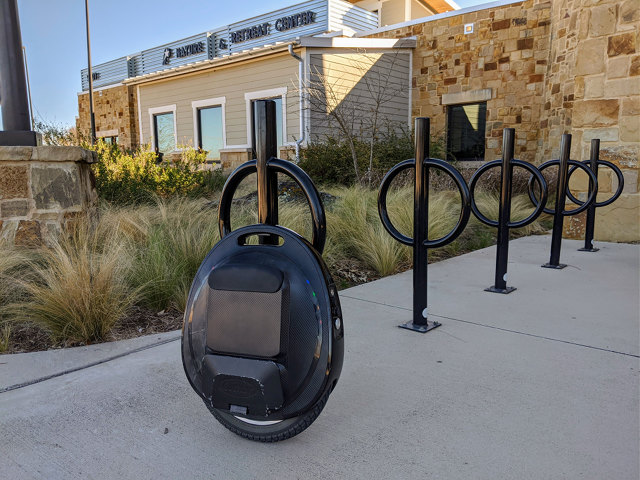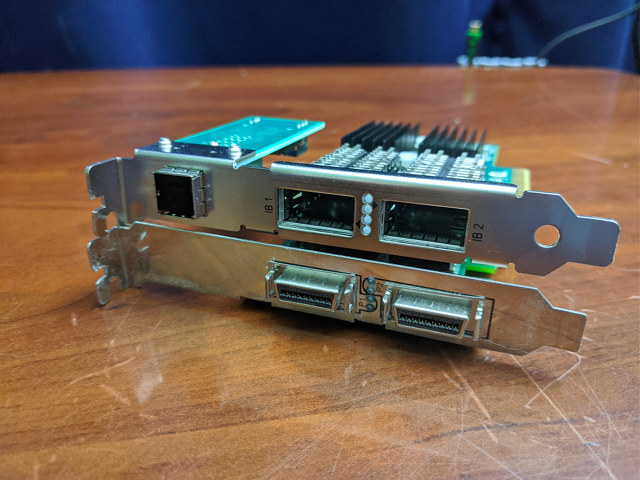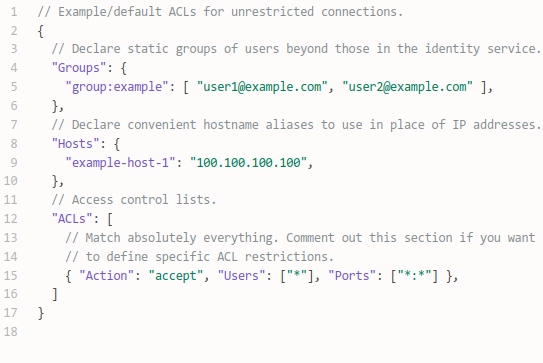I link to my FPV freestyle quad blog post from 2018 at least once a month. It bums me out that it is such an old blog post, but it also bums me out that my freestyle builds haven’t changed significantly in two years. I’ve been slowly swapping in new components as parts fail, but the heart of the build is still the same. I’m still using the same motors, batteries, and flight controller.
Other parts have changed, but they haven’t had any real impact on how the quad flies. Other than updates to Betaflight and replacing motors with crunchy bearings, my current builds feel exactly the same as what I was flying in 2018.
I am aware that it isn’t quite 2021 yet. It is getting close, though, and I don’t see any changes coming to my freestyle quads any time soon.
Should we just get the parts list out of the way?
This is the parts list:
The ESC and VTX have been upgraded. They don’t make the Runcam Eagle anymore, so I’ve switched to the Pheonix 2. That’s more of a sideways move. I’ve switched from a Hyperlite Flowride frame to my own Falcon frame design.
My build is getting tubby. I used to be somewhere around 640 grams with a GoPro HERO5 Session and a 1,000 mAh 6S battery. Now I’m up to around 720 grams with a GoPro HERO7 Black and an 1,100 mAh 6S battery.
I love the Hyperlite 1922 kv motors
I chose these motors while I was still running 5S batteries. At the time, my only other choice in a 5S motor that might be ready for 6S were the Hypetrain Stingy motors at 2150 kv. The 1,922 kv seemed like a better compromise. The kv on my Hyperlites is on the low side for 5S, but it was on the higher side for 6S.
When I got these motors in 2018, people would say, “Holy crap! 1,922 kv is so high for 6S!” These days, my friends are starting to run 1,950 and 1,999 kv on 6S. Perceptions changed a bit since I started flying these motors!
I flew and crashed those first eight motors for about 16 months before I started to notice any problems with how my quads were flying. My GoPro footage was still smooth at that point, but I could hear how funny it sounded. The bearings were getting crunchy.
Can you hear those crunchy bearings?!
I’ve never managed to fly a motor for an entire year before. My T-Motor F40 Pro V2 motors would sometimes have the bottom and top parts of a bell separate during a crash. That was a bummer, because when they got stuck like that, they’d take an ESC with them.
Are the Hyperlite motors more durable? Am I just crashing that much less? I know I’m crashing less, but when I do crash these days, it is usually a doozy!
The previous two sets of Hyperlite motors lasted 14 to 16 months, and they’re a few dollars cheaper than T-motor or Hypetrain motors, so I figured they were worth sticking with. I don’t smash into concrete all that often. I usually smash into tree trunks, but sometimes I hit them with quite a lot of force!
Hyperlite makes a budget version of my motor. I have a set, but I haven’t used them on a quad yet. The $14 version of the motors are identical to the $22 motors in every way, except the $14 version has a steel shaft instead of a titanium shaft. That makes them a little heavier and probably a bit less durable.
Don’t buy flight controllers unless they have a DJI plug
I like trying new, interesting things. For a while, I was flying the Helio Spring flight controller. It had an F4 processor running Betaflight, and it also had an F3 processor who’s only job was to filter the gyro. This seemed to work well. It was supposed to be faster than using a single F7 chip, and putting in the Helio board immediately made my quads fly better than they ever had.
Then Helio went out of business. Butterflight and filter upgrades stopped showing up. I knew it was going to be time to upgrade to something new. Were there any F7 boards with nifty new features?
I decided to try the iFlight Succex-D F7 TwinG flight controller. That’s a mouthful. It is an F7 flight controller. It has plenty of UARTs. The layout of the solder pads is quite reasonable. It also includes pads for all 8 motor outputs in addition to the ESC plug. I’m not going to run an octocopter, but having four extra pins to remap is nice!
The gimmick of the TwinG flight controller is that it has a pair of ICM20689 gyros. The second gyro is rotated 90 degrees. Betaflight is able to combine the data from both gyros without adding any latency. In theory, this should provide several decibels of noise reduction for free.
In practice, I’ve heard that it might be better to just force Betaflight to use the better of the two gyros. You’d have to look at Blackbox logs to determine if one gyro is noisy.
Either way, it is handy having two gyros. If you suspect your quad is doing something weird due to a failing gyro, you can switch back and forth between gyros to figure out whether or not that’s really the case.
I was able to get a nice F7 flight controller with an extra gyro, and it didn’t even cost more than other F7 boards. I figured it was a good deal, and I’ve been quite pleased with the hardware.
Then I accidentally fried one of these flight controllers. I repinned a cable to plug one of these into one of my old Tekko32 ESCs, and I literally wired it up backwards. I had trouble buying a replacement!
It turned out that iFlight updated my flight controller. They added a filtered 9-volt regulator and a plug for a DJI air unit. This is fantastic.
The Tekko32 was an awesome ESC. It had tons of capacitors, and it didn’t introduce much noise into my video feed. The iFlight 50A isn’t nearly as quiet. My video feed looked terrible after the upgrade. Running a giant capacitor right on the pads of the ESC didn’t help at all.
I wired my VTX and camera into the iFlight TwinG’s 9-volt regulator, and now my analog video feed is perfectly clear. I’m bummed out that iFlight didn’t include a solder pad for the 9-volt line. I had to plug a connector into the DJI port just to use the single 9-volt wire!
This is a good enough reason for me to buy DJI-compatible flight controllers. More and more DJI-compatible options are showing up every day. Not only can you use it to supply filtered power to your VTX, but you’ll be ready to plug in a DJI air unit when you decide it is time to upgrade to digital!
One of my freestyle quads still has the older non-DJI version of the iFlight TwinG. I wound up using an LC filter to clean up that quad’s video. This might be working even better, but not by much.
The iFlight 50A 4-in-1 ESC
This is one of my favorite upgrades, but it is an upgrade I don’t even notice while flying. My Tekko32 ESCs served me well for years. I have fried a few, though, so I figured maybe it was time to fly something beefier. Not only that, but the pinout on the Tekko32’s plug isn’t compatible with my iFlight flight controller. Choosing an ESC that matches the pinout of my flight controller is easier and lazier!
I think my selection process was interesting. Everybody loves the nearly bullet-proof T-Motor F55A ESC. They cost $75.
I checked out iFlight’s blheli32 ESC offerings. They have a 60A ESC with metal MOSFETs for $80. I’d pay $5 extra for metal MOSFETs, but do I really need a 55A or 60A ESC? The 35A Tekko32 held up pretty well.
I decided to try iFlight’s 50A ESC. They’re only about $50! I figured that if I fry it quickly, I should try something better.
A couple of weeks after installing the iFlight Succex 50A ESC, I was coming past a tree doing a Vanny roll. I got a little too close to the ground and crashed upside down. I turtled the quad over, the camera went to static, and I saw Betaflight reboot right before I completely lost video. Uh-oh!
I had crashed in a 3”– to 4”-deep puddle. While I was upside down, the GoPro was completely submerged. I turtled over with half my motors completely submerged—that sounded so weird in the GoPro footage! Flipping over put the entire quad under water. The only thing exposed was the GoPro.
I let it dry out for a day or two, and everything worked just fine! I flew that same build for quite a few months after being submerged. The motors have been replaced, but not due to the water. The VTX and Runcam Eagle were still working when I upgraded them too.
When the next Tekko32 exploded, it was easy to decide which ESC I would replace it with.
The TBS Unify Pro32 HV is amazing
I’ve had poor experiences with TBS VTX modules in the past. A guy we flew with 3 or 4 years ago used to fly a TBS VTX, and he used to knock everyone out of the air when he plugged that thing in. TBS VTXes are supposed to be good at this, but his wasn’t.
His was also the first one we had to unlock, and unlocking TBS VTXes has been a nightmare. Not because it is particularly difficult, but because I only do it about once a year.
My AKK VTXes have served me well for years, but now they are getting old. I know they’ve been flown with disconnected antennas. They’ve sat around stuck in trees a lot while cranking out 800mW. I know that VTXes degrade over time. Are my AKK VTXes just getting old, or were they always terrible? Who knows!
I helped Brian assemble his FPV Cycle Toothpick 3, and we used a TBS Nano VTX that maxes out at 400mW. We were able to fly that little guy out to spots without any breakup that would get sketchy for me with my AKK VTX cranked all the way up. Brian is cheating a bit. His Toothpick has very little carbon fiber to block radio signals. Even so, it was impressive.
Do I really need to put $50 VTX modules in all my quads? I started with one quad to see how much of a difference it would make. When I got home from testing that first 1,000mW TBS VTX, I ordered another. It was such a nice upgrade!
My AKK VTXes are old, and it is a really old design. I hear good things about several other modern VTXes, but I haven’t tried any of them. I’ve tried the big TBS VTX, and it works great for me, so I’m sticking with it.
Ethix S3 props
I fly a 6” frame. I rarely fly 6” props, but I like having the option. 6” props can give me a bit more efficiency and bite when I need it, and the larger wheelbase should make the quad a bit more stable. My frame is only about an inch wider than a 5” freestyle frame, so it doesn’t make hitting tight gaps all the much harder.
My favorite prop is the Ethix S3. Their efficiency is reasonable, but their top speed is quite low. I fly them because they handle propwash extremely well, and they give you amazing throttle control.
When I first tried the Ethix S3, I was disappointed with how much punch my quad had at full throttle. I wound up flying the Ethix S4 props for a few months. They seemed fantastic. When I ran out of S4 props, I figured I should try the S3 props again before ordering more props.
I’m so glad I did, and I remember exactly what convinced me to switch back to the Ethix S3 props. I did a few power loops of a small valet parking structure. I was able to line up my quad just below the ceiling on almost every single loop. It felt effortless.
NOTE: I’m having trouble finding a quick snippet of video that really shows you why I like Ethix S3 and P3 props, so here’s some smooth freestyle with a crash into a small hill.
Extremely gentle, light props like the Ethix S3 help make up for a lack of skill. The difference between the S3 and S4 isn’t huge, but the S3 definitely make me look like a better pilot. The S3 props have a pitch of 3.1”, while the S4 have a pitch of 3.7”.
I tried Alex Vanover’s Azure 4.5” pitch props. He wouldn’t tell me what the pitch was before I flew them, and I didn’t think to ask after I landed. I had to look it up myself!
They felt fantastic. I had plenty of throttle control. I knew I had more top speed than usual. I felt like I could manage my throttle on the low end about as well as I could with Ethix S4 props, but I bet I was getting an extra 10 mph at full throttle.
Alex is a fantastic pilot. I am envious of his throttle management. I wouldn’t be surprised if he could fly RaceKraft 5051 props on my quad smoother than I can fly Ethix S3 props.
If you need to cheat like I do to get that smooth throttle control, you need to try the Ethix S3 props.
If you like the Ethix S4 props, you absolutely need to try the Vanover props.
Is it peanut butter jelly time?!
I’m in the middle of writing this post, and I just opened a box of props. Half the props are Ethix S3, the other have are Ethix P3 props in their signature peanut butter and grape jelly colors.
When I ordered the P3 props, I was assuming that I wouldn’t be able to notice the difference. They’re 0.1” longer than the S3 props, but they have 0.1” less pitch. Longer props are more efficient and more powerful, but some or all of that might be negated by the drop in pitch. I expected it would be a wash.
After holding them in my hand, I’m less certain of my assumption.
This is why I split my order in half. I really wanted to try the P3 props, but how mad would I be if I ordered 40 sets of S3 props after liking the P3 props even more?!
It may or may not be peanut butter jelly time. I’ll figure that out over the next couple of weeks.
My Falcon frame
My Falcon frame is open-source. It is hosted on Gitlab, though I don’t think my latest changes have been pushed up yet—I don’t like uploading changes that I haven’t tested in the real world!
I assumed I’d never bother designing a 5” freestyle frame. Designing the Kestrel was fun, because it is at least somewhat unique. What new idea could I bring to a 5” freestyle quad?!
I didn’t like the idea of flying someone else’s frame when I have sheets of carbon fiber and a CNC out in the garage, so I needed some new idea. I decided to see if I could design a 5” frame that only used one screw per arm.
The first frame that I cut with one screw per arm and a Kestrel dog bone is pretty loose. It is my own fault. I’ve cut Kestrels that didn’t even fit together without some filing, and I wound up overcompensating on my tolerance variable in OpenSCAD. I doubt the arms move in flight, but you don’t need all that much muscle to pivot them around in your hands.
I decided to try the same thing with one additional screw in the center of the dog bone. This worked even better than I’d hoped. The arms don’t pivot at all, because the dog bone just won’t move. The tolerances are also tighter. I don’t like having a screw right under my stack, though.
I have a new idea that would take 1,500 words to explain. Assuming it works out, the dog bone is going away. I’ve worked out a way to hold the two bottom plates together with pieces of carbon fiber. They look kind of like fractal dog bones. I’ll need two of these pieces. Each piece will also lock two arms together to prevent them from pivoting on their single mounting screw.
I’m pretty excited about this. I have some concerns, but I’m pretty confident that it will work. I haven’t seen this sort of setup used anywhere else yet.
Why the Runcam Phoenix 2?!
I used to fly the full-size Runcam Eagle, and I’ve been flying the Eagle Micro since it became available. The Eagle has the biggest CMOS sensor and the biggest lens with the widest aperture of any FPV camera. They don’t make this camera any longer.
My Micro Eagles are starting to fail. I decided to order a Phoenix 2 to try out. Runcam said it was the replacement for the Eagle, and popular cameras from Foxeer and Caddx use the same sensor. It is cheaper than the Eagle, and I like Runcam’s build quality, so I figured it was worth a short.
A week after installing my Phoenix 2, Joshua Bardwell announced his edition of the Phoenix 2, and it has UART camera control! I have one of each. You should buy the Bardwell edition. Not having to plug in a joystick to set up your camera is so luxurious. I wish I had procrastinated seven more days. I wouldn’t be stuck with a non-UART version in one of my builds!
Then Runcam started selling the Micro Eagle 2. I don’t know what this camera is, but it sure doesn’t look like a replacement for the original Eagle. It has a tiny lens and a small sensor. I’m sure the sensor is more modern, so it doesn’t need to be as big, but it doesn’t look like a better camera than the Phoenix to me.
Why bother with a GPS module?!
They’re cheap. They’re light. Having a speedometer on your OSD is fun!
Return to home works, but I have not trained myself to use it. I’ve always said I could flip that switch when someone plugs in and stomps all over my video signal, but I’m not smart enough to do that.
I’m still using the tubbier HGLRC modules. I already have them, and my quads are wired with the correct cable. My Kestrel uses a tiny 5-gram GPS module. It is less than half the weight of the HGLRC setup.
If I lose enough GPS modules, I will start switching my fleet over to the 5-gram modules.
Conclusion
Not much has really changed significantly since 2019. My quads have gotten heavier mostly due to battery and GoPro upgrades. My props are quite a bit less aggressive. I used to fly HQ 5.1x4.1x3 and HQ 5.1x4.6x3 props. The Ethix props are less aggressive, a good bit lighter, and so much more responsive. If I swapped props and put my GoPro Session back on, it would be just like I was flying my old builds. So much of the key hardware is the same.
What do you think? Are you still flying roughly the same freestyle build you were flying two years ago? Am I missing out on any exciting upgrades? Let me know in the comments, or stop by the Butter, What?! Discord server to chat with me about it!










